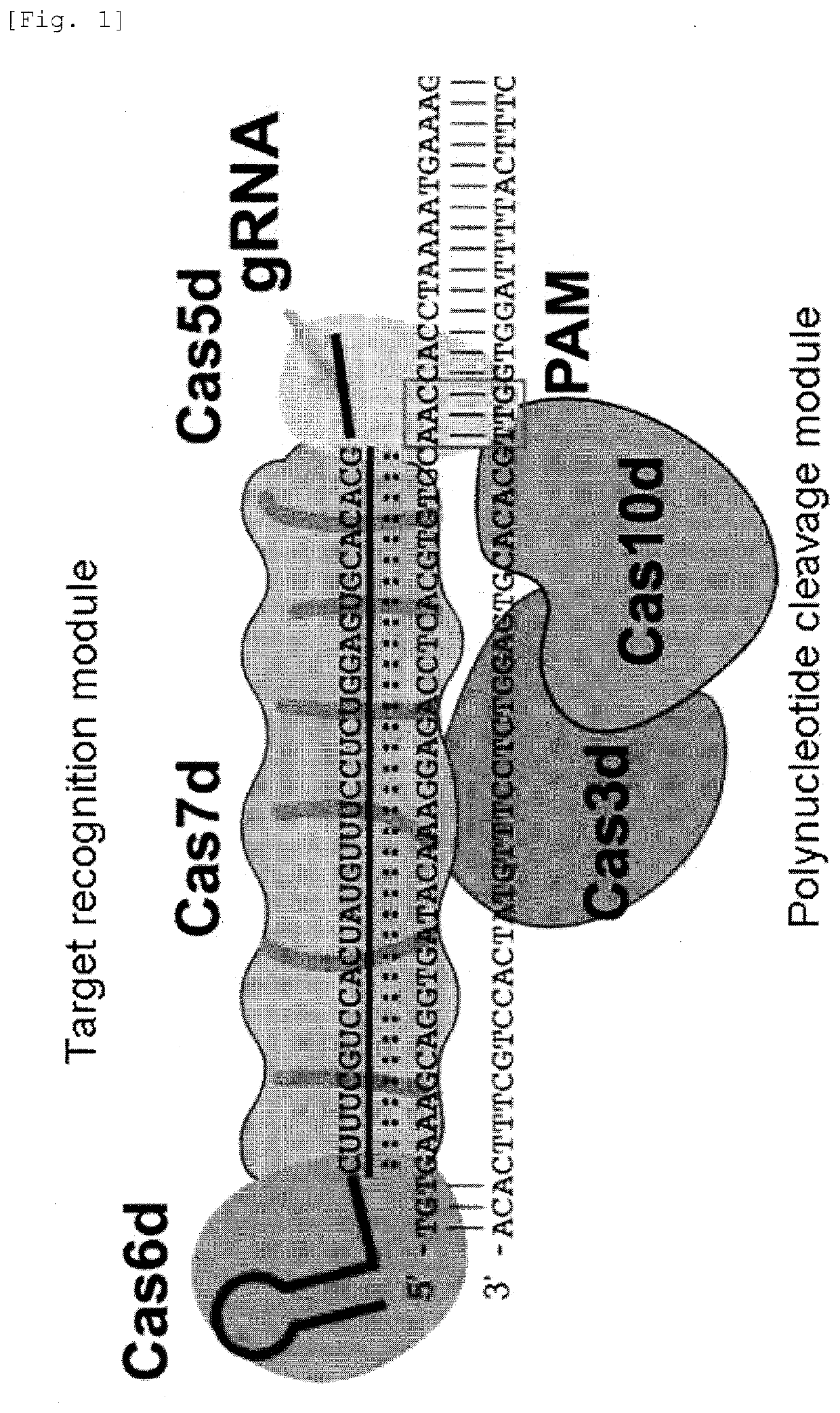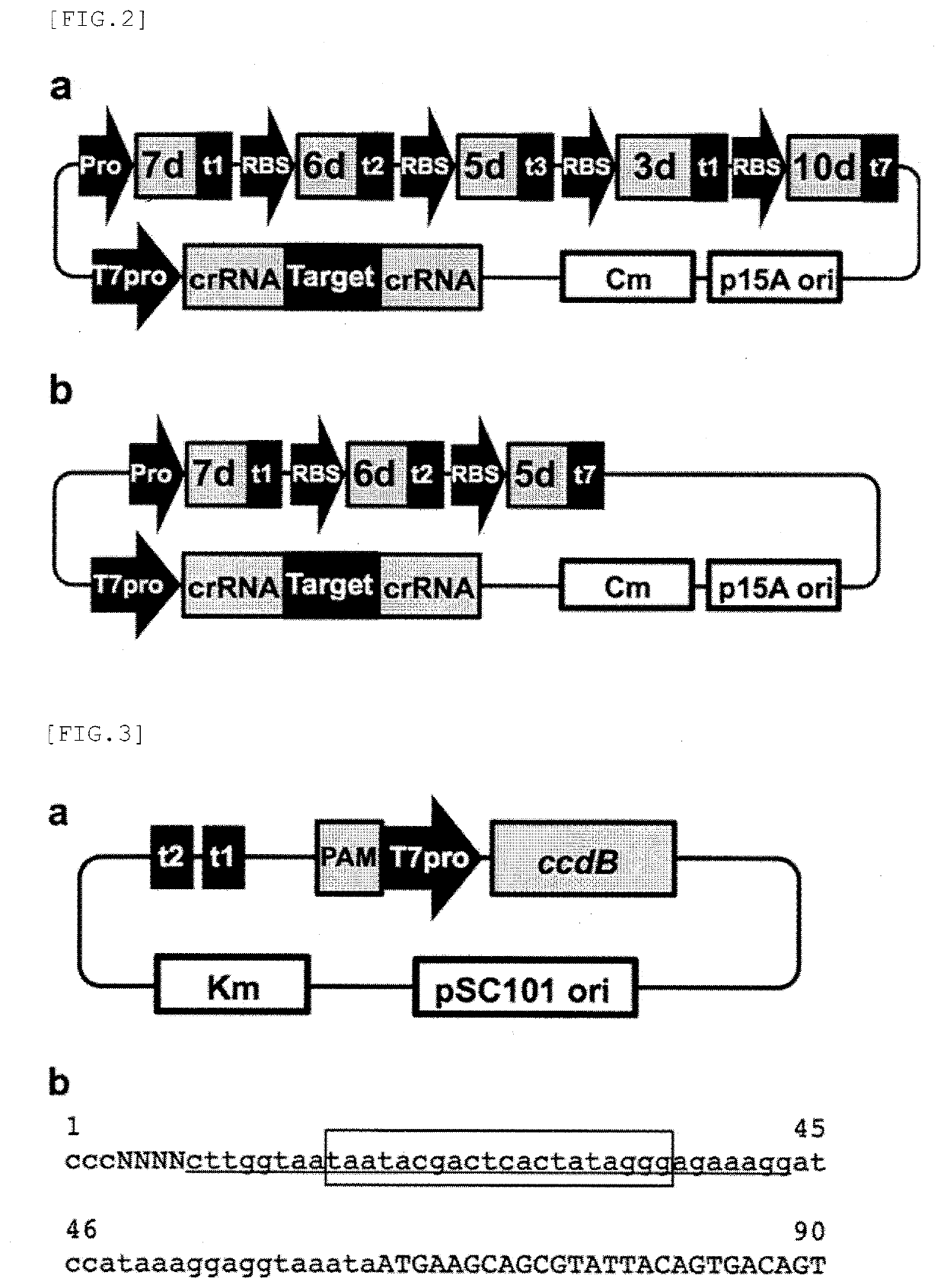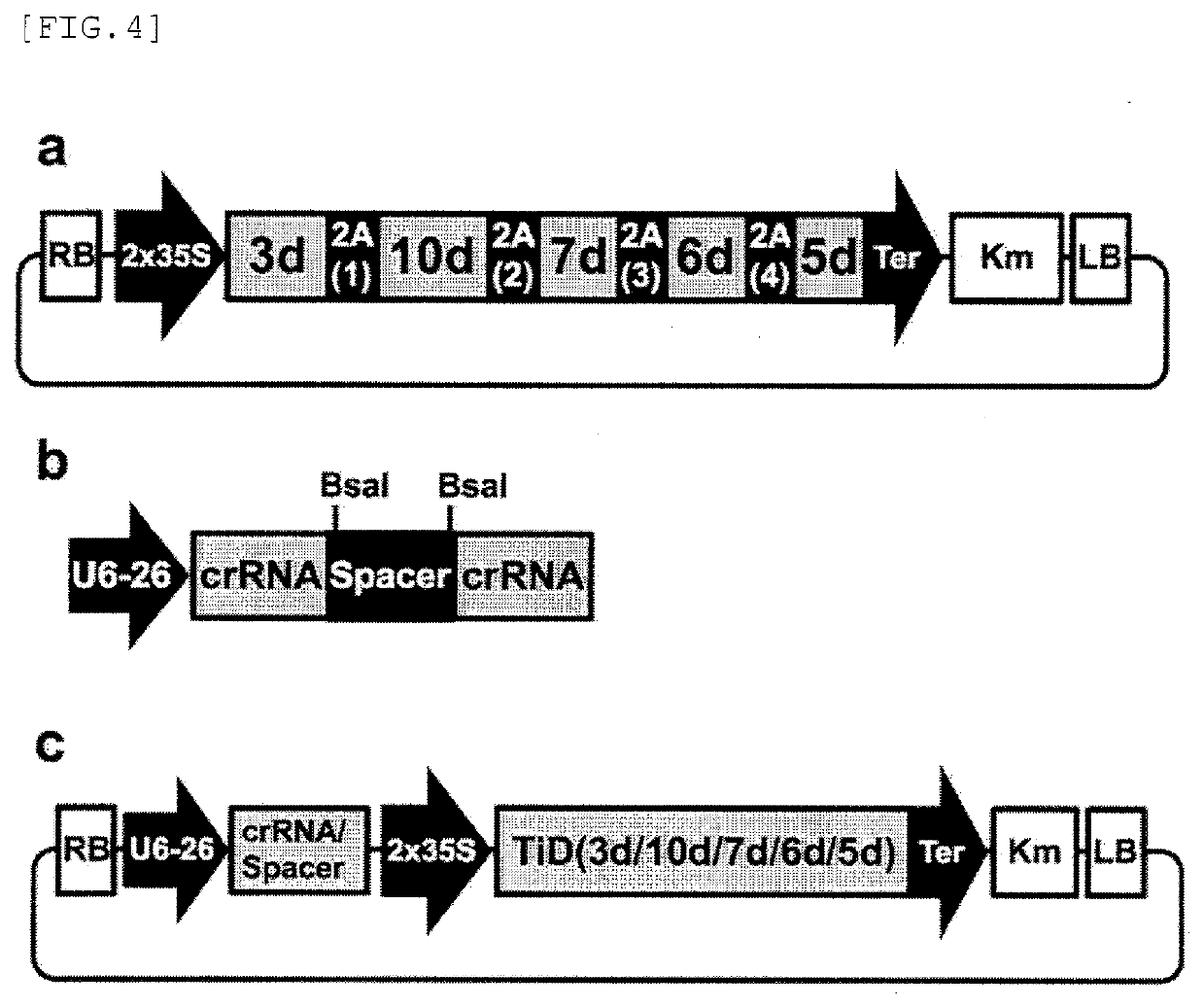Target sequence specific alteration technology using nucleotide target recognition
- Summary
- Abstract
- Description
- Claims
- Application Information
AI Technical Summary
Benefits of technology
Problems solved by technology
Method used
Image
Examples
example 2
iting in Higher Plants
[0137]In this example, as an embodiment of genome editing in higher eukaryotes, it was demonstrated that the technique of the present invention effectively functions in Nicotiana benthamiana and Solanum lycopersicum.
(1) Construction of Binary Vector for TiD Gene Expression in Higher Plant Cells
[0138]According to frequencies in Arabidopsis and tobacco, dicotyledon codon-optimized sequences encoding each Cas protein were artificially chemically synthesized based on the amino acid sequence information of Cas5d, Cas6d, Cas7d, Cas3d and Cas10d derived from the TiD locus of M. aeruginosa. A DNA fragment comprising a nuclear localizing signal sequence (SEQ ID NO: 22, SEQ ID NO: 23) containing two nuclear localizing signals arranged in tandem 5′-upstream of each of the Cas protein-encoding genes, and a self-cleaving peptide 2A sequence (SEQ ID NOs: 24-28) between the Cas protein-encoding genes was prepared. A promoter sequence (2×35S promoter; SEQ ID NO: 29) comprisin...
example 3
iting in Higher Animals
[0142]In this Example, as an embodiment of genome editing in higher animals, it was demonstrated that the technique of the present invention effectively functions in human embryonic kidney cell-derived cell line HEK293.
(1) Construction of Vector for TiD Gene Expression in Higher Animal Cells
[0143]Gene sequences encoding each Cas protein were artificially chemically synthesized based on the amino acid sequence information of Cas5d, Cas6d, Cas7d, Cas3d and Cas10d derived from the TiD locus from M. aeruginosa. A DNA fragment comprising a nuclear localizing signal sequence (SEQ ID NO: 22, SEQ ID NO: 23) containing two nuclear localizing signals arranged in tandem 5′-upstream of each of the Cas protein-encoding genes, and a the self-cleaving peptide 2A sequence (SEQ ID NOs: 24-28) between the Cas protein-encoding genes was prepared. A cytomegalovirus enhancer+chicken β-actin gene promoter hybrid sequence (CBh promoter; SEQ ID NO: 41) was ligated at 5′-upstream of t...
PUM
 Login to View More
Login to View More Abstract
Description
Claims
Application Information
 Login to View More
Login to View More - R&D
- Intellectual Property
- Life Sciences
- Materials
- Tech Scout
- Unparalleled Data Quality
- Higher Quality Content
- 60% Fewer Hallucinations
Browse by: Latest US Patents, China's latest patents, Technical Efficacy Thesaurus, Application Domain, Technology Topic, Popular Technical Reports.
© 2025 PatSnap. All rights reserved.Legal|Privacy policy|Modern Slavery Act Transparency Statement|Sitemap|About US| Contact US: help@patsnap.com



